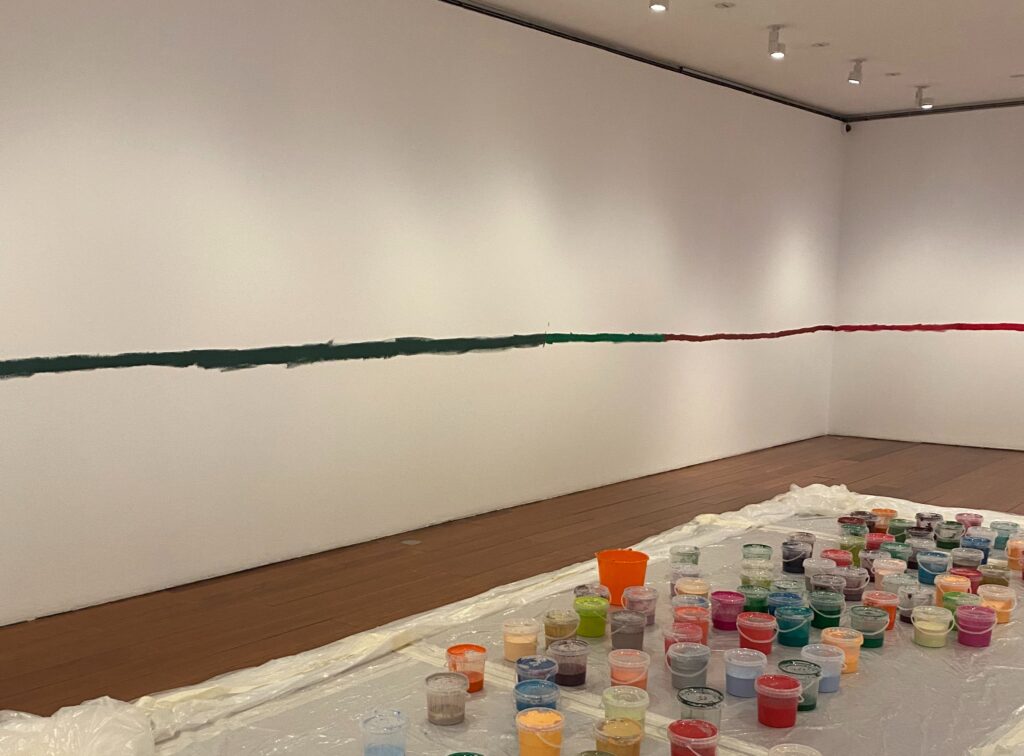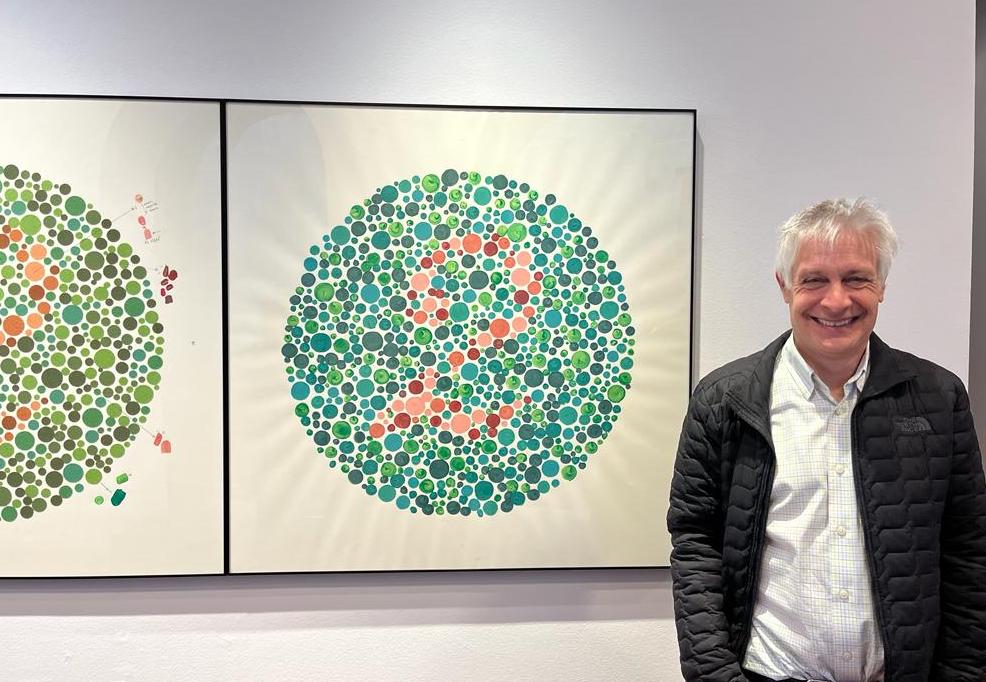- Facebook49
- Twitter1
- Total 50
I am color-blind. I have the common red/green type sometimes called Daltonism.
I do not mind. In fact, I don’t think I would accept a permanent “cure,” if there were one. I might like to experience the colors that most sighted people see, but I wouldn’t want to leave the world I know on a one-way journey. I love what I experience.
Miguel Fructuoso, Maria Sanchez and Miguel Angel Tornero are established Spanish artists. Although Fructuoso was born in 1971, he was recently diagnosed with Daltonism. I am curious about that story. Adults realized that I was color-blind when I was still a little kid. Fructuoso is a painter, and he has the same physical condition I do. I am not sure how he remained undiagnosed for half a century. It has been suggested, but not widely accepted, that the English landscape painter Constable was color-blind at a time before that condition was recognized.
In any case, Fructuoso’s realization “initiated an intense collaboration” with Sanchez and Tornero, who have co-produced works as “formal exercises” that help them to explore “empathy and exclusion, the rare and the common, individualism and the collectivity.”
They have created several such works for the Centro Jose Guerrero in Granada. Guerrero was born here in 1914, spent a considerable portion of his life as an abstract expressionist painter in New York City, and died in Barcelona in 1991. He was known for vivid color. That makes his eponymous museum a perfect location for an exhibition about color-blindness.
The photo (above) that illustrates this post shows a painting by Guerrero from ca. 1970 (I think), copied by the three contemporary artists, with color-blind “Bill” choosing the paints. Yes, the two images look very similar to me, except along the top band.
Below is the result when many people with red/green color-blindness were offered a large selection of paints and asked to paint a line of a single color around the room in the Centro Jose Guerrero. Yes, I perceive a green line going all the way around.

And here, the artists have reproduced the standard tests for color-blindness as gallery works in paint and print. (No, I cannot see any numbers, but I do like these images.)

Since I have not felt mistreated as a result of color-blindness, I was not deeply moved by the exhibition’s message of empathy and inclusion, although it’s certainly benign. And I suppose I am sympathetic to Fructuoso, although he has done very well in a conceptual/expressionist mode.
I find aesthetic questions about color-blindness interesting. For example, how might we compare the art that I see (and love) to what most of you see? Does it matter that I don’t see what was intended? And how should I feel, as a person with Daltonism, about monochrome art, expressionist art that is meant to look different from the real world, or impressionist works that reproduce nature’s colors for me even though both the paintings and their objects look different to you?
